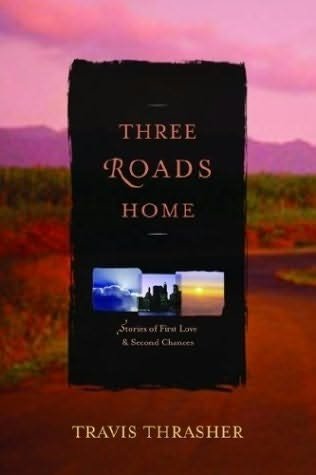In fall of 2002, I was working on the edits for what would become my fourth work of fiction called Three Roads Home. I call it a work of fiction instead of a novel since this book contained three novellas. Even now this sort of book is unusual (unless you’re Stephen King, who regularly releases novella collections). The three stories I wrote featured couples at the crossroads. “Somebody” might be the most personal.

I don’t remember all the details about working on the revisions for Three Roads Home, but I know I added a short section to “Somebody” that became pivotal in my journey as a writer. Reading it now, it feels amateurish and doesn’t truly achieve what I was trying to do. But it was a first for me as an artist. This was maybe one of the first moments when I simply poured out my heart and soul onto the page of a story. I did this with the help of a song I played over and over.
Up to this point in my writing, I had always played instrumental music while working. I still do. Writing to songs with vocals and lyrics is difficult and distracting. Yet for the first time, I decided to let a love song inspire the scene I was creating. That song was Coldplay’s “The Scientist.”
Earlier that summer on August 26, Coldplay released their second album, A Rush of Blood to the Head. Many still consider it their finest album. I had only heard a couple of the popular songs from their first album, Parachutes, and only knew the band from their “Yellow” video, the one with the guy walking in the rain on the beach. But their second release truly was a rush of blood to the head, from the searing opener “Politik” to the pulsing “God Put a Smile Upon Your Face” to the anthem of “Clocks.” Amidst these energetic songs sat “The Scientist,” one of their classic love ballads.
I don’t know if I had seen the video for “Clocks” before I wrote this little scene in my novella, “Somebody.” The video is memorable for its reverse-motion style. (Interesting fact: Chris Martin took a month to learn how to sing the song backwards in order to film this.) All I know is that I loved this tune and that it went perfectly with the scene I was writing. It was the moment when the boy and the girl say their goodbyes and then depart, still thinking of one another, asking themselves that important question of “What if?”.

I didn’t think about this scene but rather simply went with my emotions. The words that poured out were fragments and pieces. One-word paragraphs. Short, incomplete sentences. Italicized, broken thoughts.
The structure of “Somebody” was already a bit ambitious. There is the main narrative told from Charissa’s point of view in third person that unfolds from a Tuesday night at 9:50 p.m. to Wednesday morning at 7:47 a.m. Then you have an excerpt of an email that follows each section, something that I like to call an interlude. Mixed in with these are sections entitled “Charissa” and “Trevor” that summarize the couple’s backstory from each person’s POV. To change things up even more, Charissa’s section is told in first person while Trevor’s is in third person. Confused? It sounds that way, but it’s pretty easy to follow. Convulted and unnecessary? Maybe. But I was young and wanted to try out everything.
This particular scene I wrote comes near the end of the story, when Charissa’s and Trevor’s narrative comes together. And I just couldn’t help myself when I switched the narrative from past tense to present. In my mind, this was a montage of emotion and memories and interior monologue, all summarized by the key line in Coldplay’s “The Scientist”:
“Oh, take me back to the start”
So I wrote out a farewell scene.
He looks up to the sky, piece of the jigsaw night appearing.
Not far behind, heading toward the expressway, heading west toward her home, she looks out at the passing traffic.
Steps.
Lanes emerging.
A train car waiting.
A two-seater convertible cutting them off.
Railroad tracks.
Four car lanes.
Miles.
Years apart.
Start.
A word lingering in his mind. And in hers.
Start.
Back to the start.
Back to the start of it all.
Years removed and destinies apart and roads traveled and yet this night arrived with a timely, predestined intersection. One more step, one hesitation, one minute earlier or later—
But no.
Their paths crossed.
That’s about half of the scene. No, this isn’t an attempt to sell a book. Looking back, I know now that if there is one particular style and voice that I prefer, it’s this. Writing in present tense with short sentences mixed with slices of thought and action. I believe I did this well in my YA series, The Solitary Tales.
Years later, I began work on another work of fiction that eventually became the novel I titled Midnight. It’s both named after and inspired by the Coldplay song. It’s been finished for a while now, and I plan to publish it in some form in the near future. Every chapter I wrote was written in this particular way, being inspired by a song and just writing something based on this. There’s a very loose plot in Midnight, but the novel is an experiment of sorts. It’ll be fun to see what readers think of it.

I am so glad that you found your voice all those years ago. I have read the bulk of your novels. With the excpetion of one I have enjoyed them all, to varying degrees. Keep up the great work.